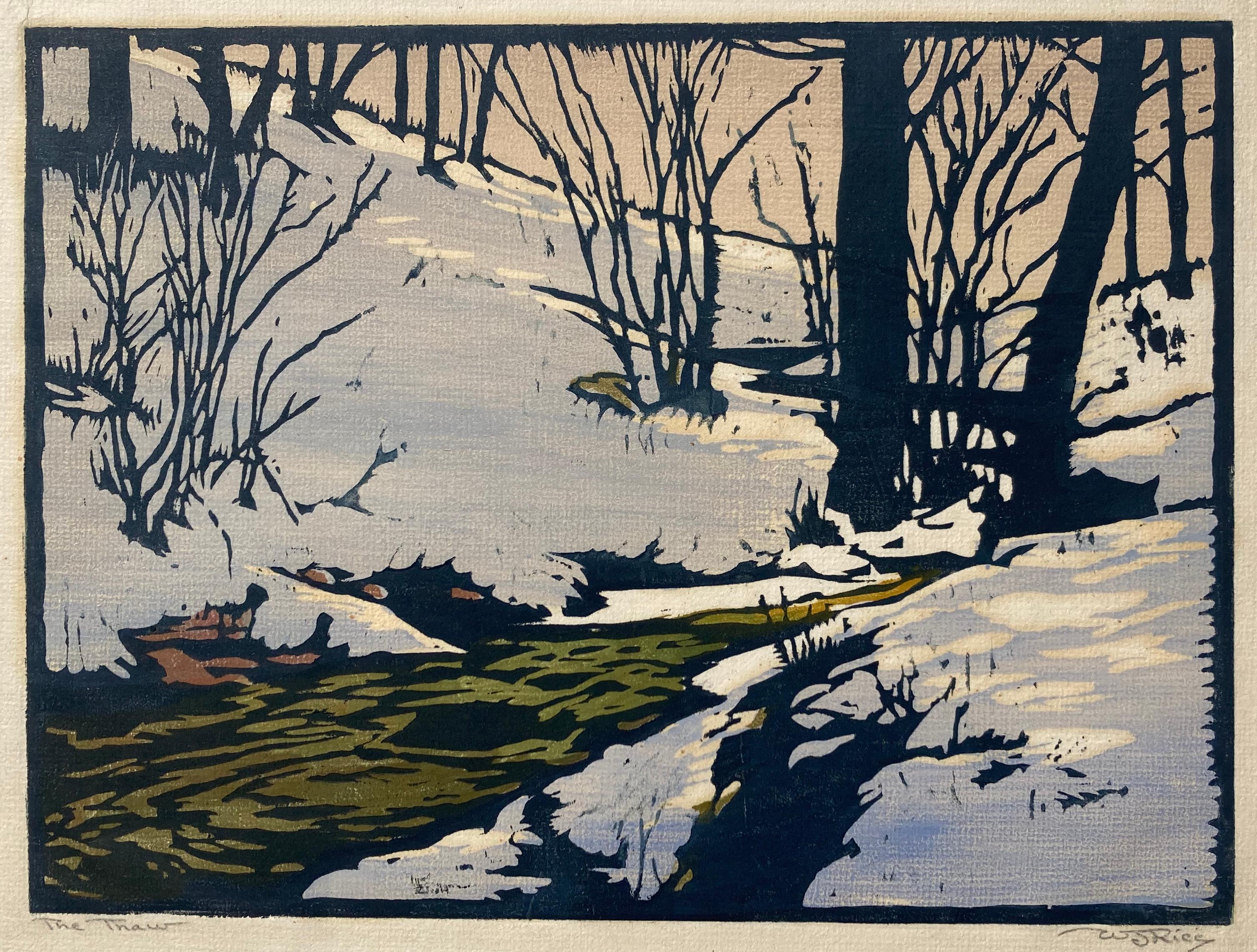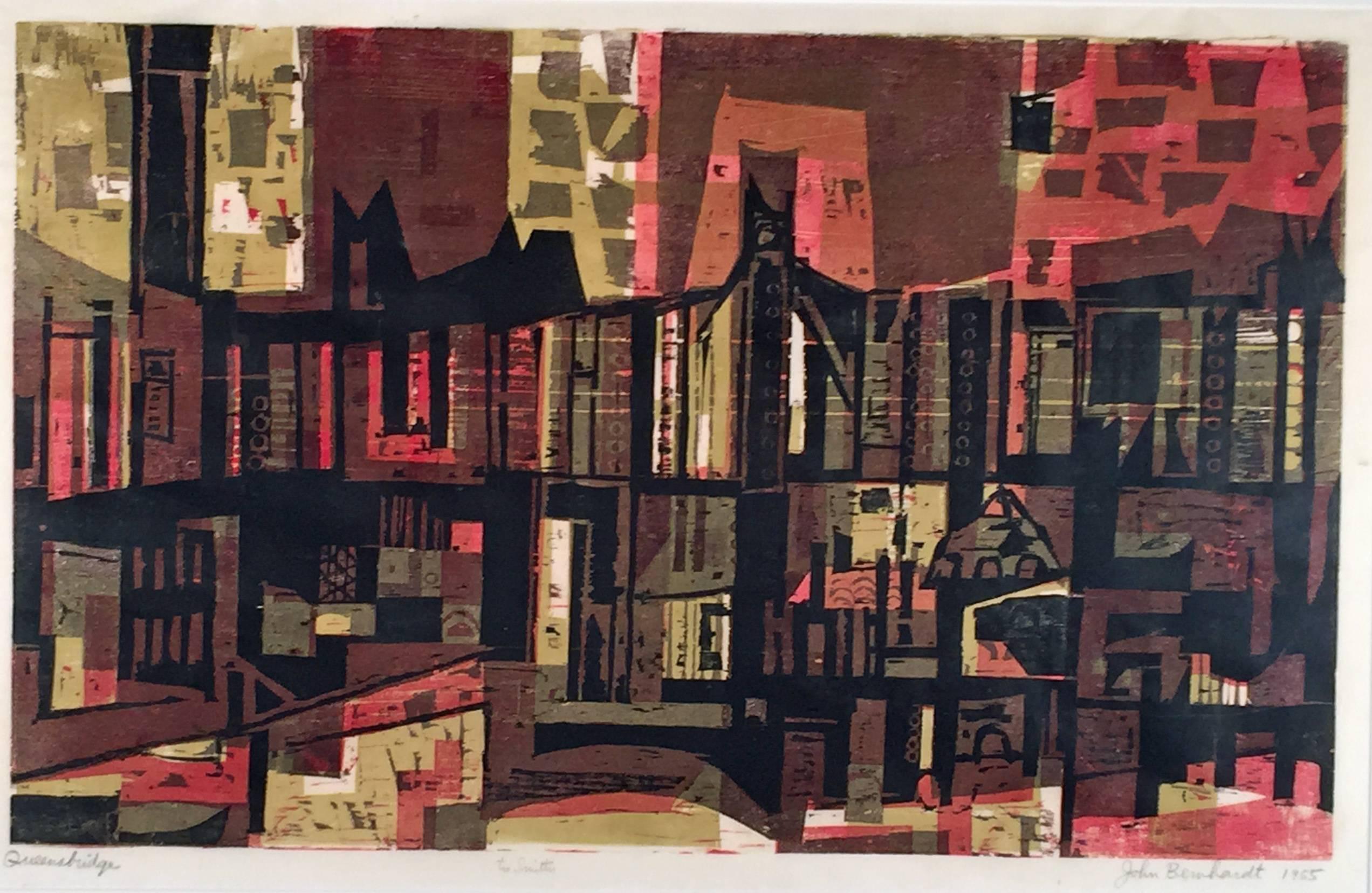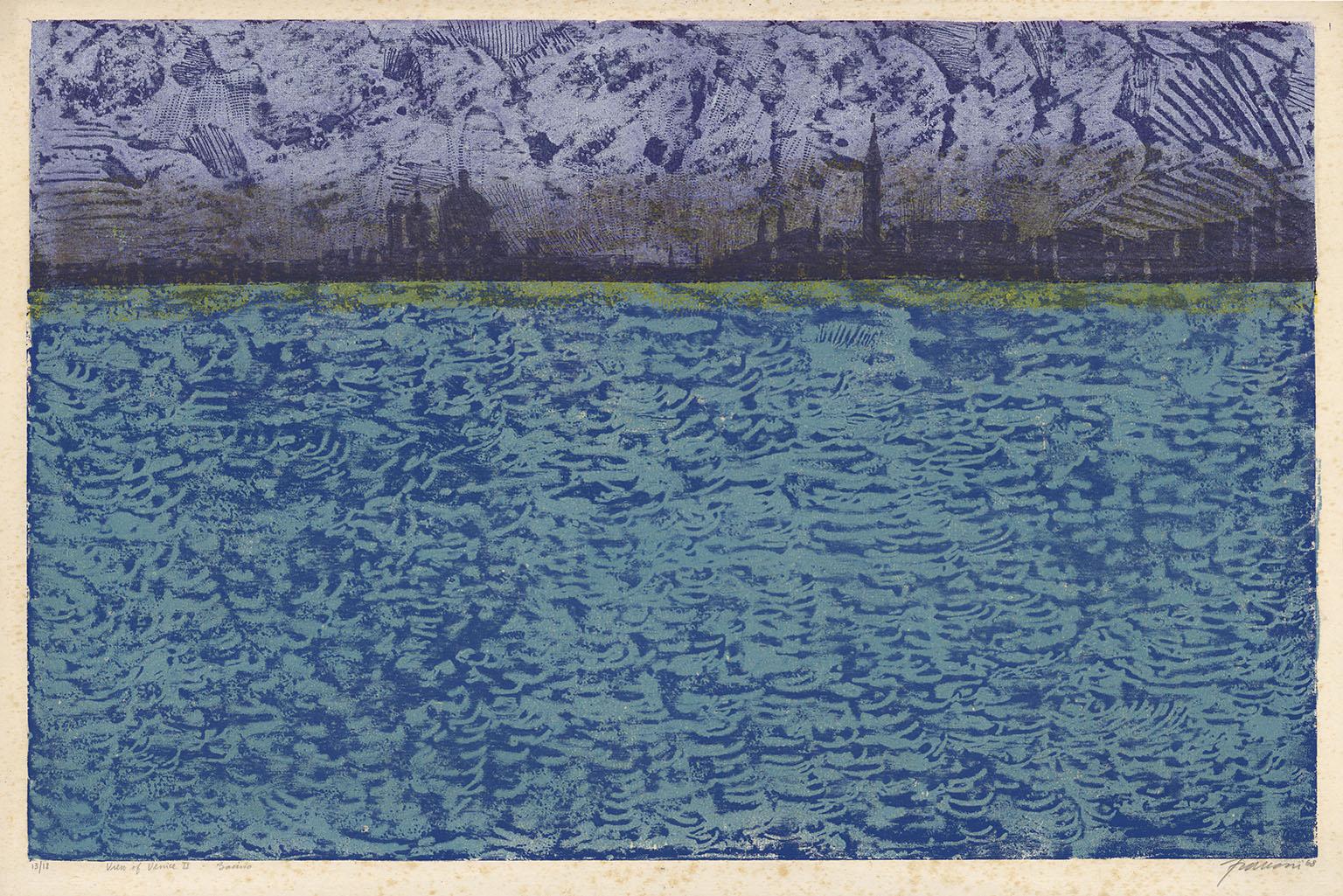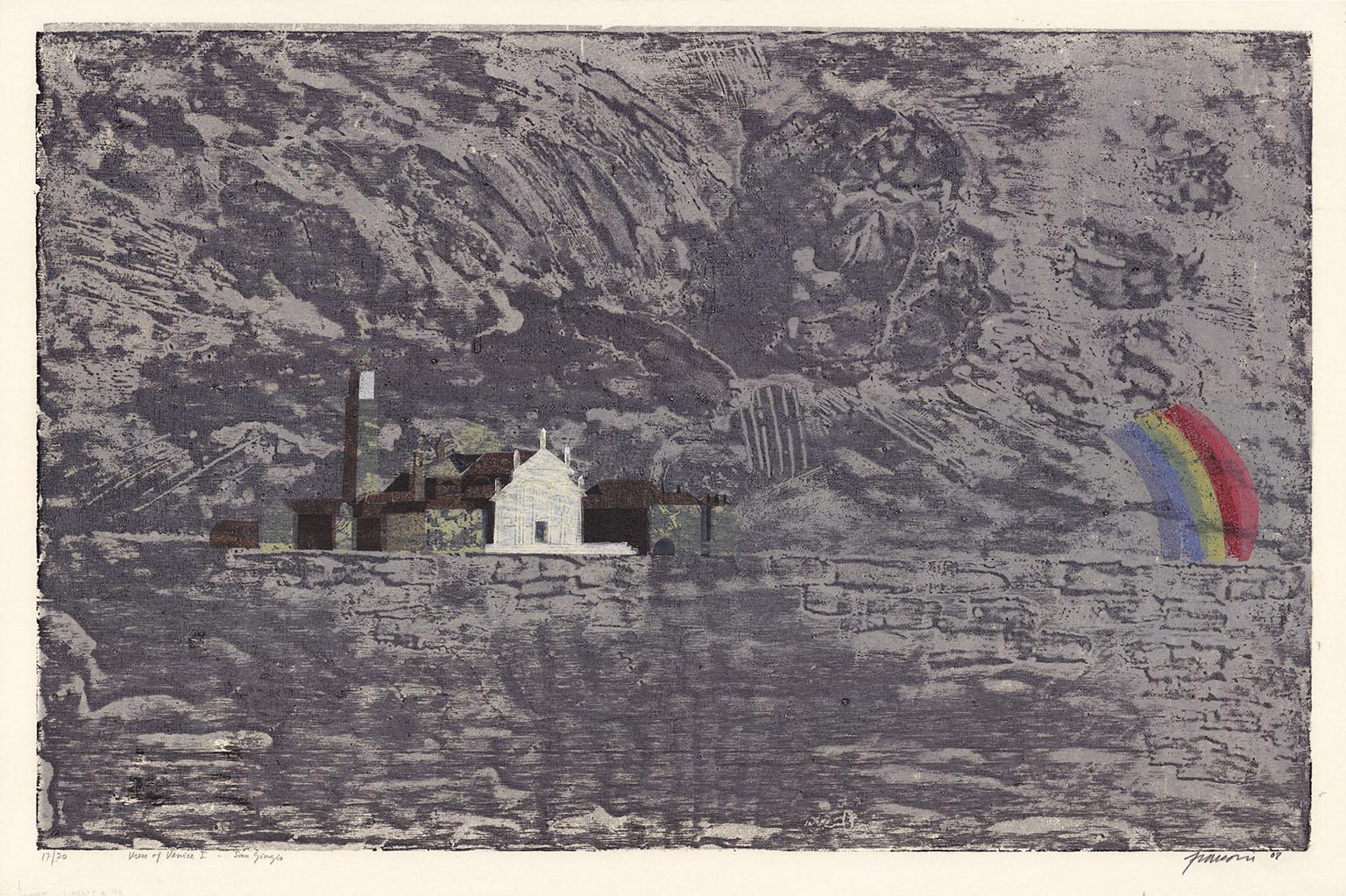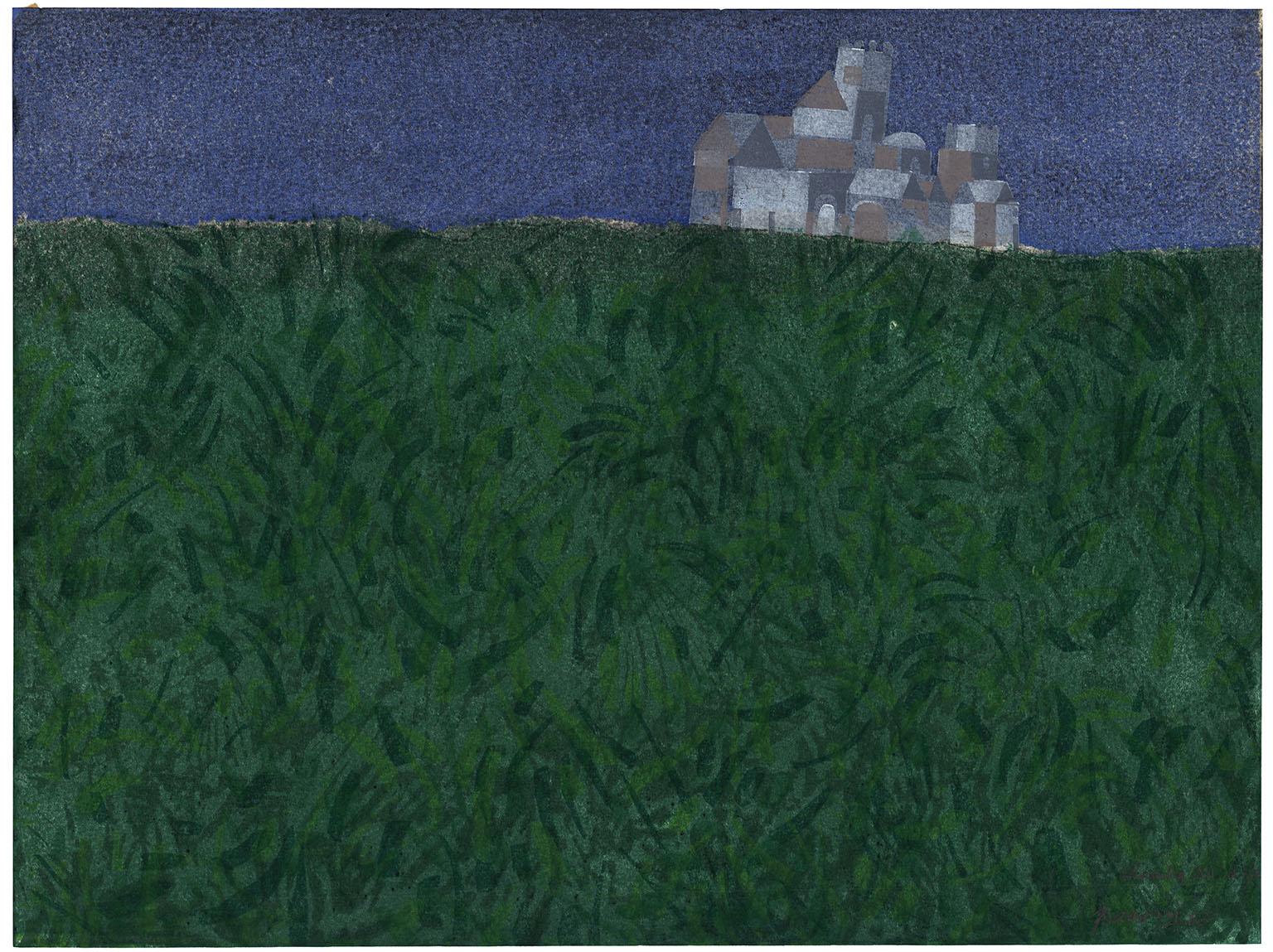Want more images or videos?
Request additional images or videos from the seller
1 of 9
Ethel MarsStreet Scene, Provincetown.circa 1919
circa 1919
About the Item
This white-line woodcut was made circa 1919. The edition size is unknown. Image size 12 x 11 1/16" (30.5 x 28 cm). Signed "E-Mars" in pencil on the mount. Mount 16 5/8 x 14 1/2." Ethel Mars was born in Springfield, IL. She attended Cincinnati Art Academy meeting fellow artists/printmakers Edna B. Hopkins and Maud Hunt Squire (who later became her lifelong companion).
In 1905 Mars and Squire moved to Paris and quickly became active members in the vibrant Parisian art community. They were known to visit Gertrude Stein and Alice Toklas, and it is said that Ethel Mars and Maud Hunt Squire inspired Stein’s prose Miss Furr and Miss Skeene. At the outset of WWI Mars and Squire left Paris and settled in Provincetown, MA., a magnet for creative minds. Other artists arrived in Provincetown, among them were Blanche Lazzell, B. J. O. Nordfeldt, Ada Gilmore and Mildred McMillen. These were the original group of artists to make White Line Woodcut prints, then called Provincetown prints. This new printmaking technique, which grew out of the traditional Japanese multi-block color woodcut, simplified some of the technical difficulties of registration and printing, allowing the Provincetown group to make blocks and print them in their home settings. At the end of the war, Mars and Squire returned to France moving south to Vence. Ethel Mars remained in France for the remainder of her life.
White-line woodcut is a relief printing process where wood is cut away leaving selected areas to be painted (usually with water-based paint) and then to be printed. The ‘white line’ (usually a thin line) is cut from the block of wood separating the different color areas. The Process: First, a drawing is made on the surface of the woodblock. The lines of the drawing are then cut out with a sharp knife or v-gouge. When the design cutting is finished, the artist attaches a sheet of printing paper to the block. One section of the block is printed at a time – hand brushing the paint in the desired areas. The paper is then lowered onto the block and the back of the paper is rubbed, transferring the ink to the paper. The paper is lifted away from the surface of the block in between inkings. This process is repeated until the artist is satisfied with the desired color and density of the print. The unique variations and luminous color help to give White Line Woodcuts their strong poetic quality.
- Creator:Ethel Mars (1876 - 1959, American)
- Creation Year:circa 1919
- Dimensions:Height: 24 in (60.96 cm)Width: 20 in (50.8 cm)Depth: 1 in (2.54 cm)
- Medium:
- Movement & Style:
- Period:
- Framing:Framing Options Available
- Condition:Mild staining on mount.
- Gallery Location:New York, NY
- Reference Number:
About the Seller
4.6
Recognized Seller
These prestigious sellers are industry leaders and represent the highest echelon for item quality and design.
Established in 1898
1stDibs seller since 2015
52 sales on 1stDibs
Typical response time: 12 hours
Associations
International Fine Print Dealers Association
- ShippingRetrieving quote...Ships From: New York, NY
- Return PolicyA return for this item may be initiated within 14 days of delivery.
More From This SellerView All
- View of Venice II - BacinoBy Antonio FrasconiLocated in New York, NYAntonio Frasconi created the color woodcut entitled "View of Venice II – Bacino" in 1968. It is signed, titled, dated, and inscribed “13/18” in pencil. The paper size is 24 x 36 inch...Category
1960s American Modern Landscape Prints
MaterialsWoodcut
- View of Venice I - San GiorgioBy Antonio FrasconiLocated in New York, NYAntonio Frasconi created the color woodcut entitled "View of Venice I – San Giorgio" in 1968. It is signed, titled, dated, and inscribed “17/20” in pencil. The paper size is 24 x 36 ...Category
1960s American Modern Landscape Prints
MaterialsWoodcut
- Alhambra XIIBy Antonio FrasconiLocated in New York, NYAntonio Frasconi created the color woodcut entitled “Alhambra XII” in 1963. This piece is signed titled, and dated in pencil. The edition is 12, and paper size is 18 x 24 inches. “...Category
1960s American Modern Landscape Prints
MaterialsWoodcut
- Monterey Fisherman [and] Monterey Fisherman 2.By Antonio FrasconiLocated in New York, NYDiptych. This two sheet color woodcut was created by Antonio Frasconi in 1951. Edition 8. Each image size 19 7/16 x 16 7/16" (49.4 x 418 cm) plus margins. Signed and titled in p...Category
Mid-20th Century American Modern Landscape Prints
MaterialsWoodcut
- La Casa ViviendaBy Emilio SanchezLocated in New York, NY“LA CASA VIVENDA” Emilio Sanchez (1921-1999) created this color lithograph entitled “La Casa Vivenda” circa 1991. Image size 18.38 x 25 inches and the paper size 21.75 x 29.38 inches. Printed in an edition of 100 this impression is inscribed “70/100” - the 70th impression of 100. This impression is pencil signed in the lower right and inscribed in the lower left. “Best known for his architectural paintings and lithographs, Emilio Sanchez (1921-1999) explored the effects of light and shadow to emphasize the abstract geometry of his subjects. His artwork encompasses his Cuban heritage...Category
1990s American Modern Landscape Prints
MaterialsLithograph
- Shadow of the Brooklyn Bridge.By Emilio SanchezLocated in New York, NY“THE SHADOW OF THE BROOKLYN BRIDGE” Emilio Sanchez (1921-1999) created this color lithograph entitled “Shadow of the Brooklyn Bridge” in 1988. The image size is 21.38 x 30.50 inche...Category
Late 20th Century American Modern Landscape Prints
MaterialsLithograph
You May Also Like
- THE THAWBy William Seltzer RiceLocated in Santa Monica, CAWILLIAM SELTZER RICE (1873 - 1963) THE THAW c 1915-20 Color woodcut, signed and titled in pencil. Image 8 7/8 x 12 inches, sheet 10 3/4 x 14 3/8 inches. On textured fibrous paper. V...Category
1910s American Modern Landscape Prints
MaterialsColor, Woodcut
- QUEENSBRIDGELocated in Portland, MEBernhardt, John (American 1921-1963. QUEENSBRIDGE. Color Woodcut, 1965. Ttiled, signed, dated and annotated "To Smitty" in pencil. 17 3/4 x 28 inches. In very good condition. Framed ...Category
Mid-20th Century American Modern Landscape Prints
MaterialsColor, Woodcut
- "The Long White Road, " Landscape Wood EngravingBy Lowell Merritt LeeLocated in Milwaukee, WI"The Long White Road" is an original wood engraving by Lowell Merritt Lee. A long white road stretches past empty barren trees under a cloudy sky. Image: 6" x 5" Framed: 15.37" x 1...Category
1930s American Modern Landscape Prints
MaterialsWoodcut
- 'Taos Placita' — 1940s Southwest RegionalismBy Gustave BaumannLocated in Myrtle Beach, SCGustave Baumann, 'Taos Placita', color woodcut, 1947, edition 125. Baumann 132. Signed, titled, and numbered '20-125' in pencil; with the artist’s Hand-in-Heart chop. A superb, richly-inked impression, with fresh colors, on fibrous oatmeal wove paper; the full sheet with margins (2 to 3 1/8 inches); slight rippling at the left sheet edge, in excellent condition. Matted to museum standards, unframed. Image size 9 5/8 x 11 1/4 inches (244 x 286 mm); sheet size 13 1/4 x 17 inches (337 x 432 mm). Collections: New Mexico Museum of Art, Phoenix Art Museum, Wichita Art Museum. ABOUT THE ARTIST Gustave Baumann (1881-1971) was a renowned printmaker and a leading figure of the American color woodcut revival whose exquisite craftsmanship and vibrant imagery captured the essence of the Southwest. "A brilliant printmaker, Baumann brought to the medium a full mastery of the craft of woodworking that he acquired from his father, a German cabinetmaker. This craftsmanship was coupled with a strong artistic training that resulted in the handsome objects we see in the exhibition today. After discovering New Mexico in 1918, Baumann began to explore in his woodblock prints of this period the light. color, and architectural forms of that landscape. His prints of this period are among the most beautiful and poetic images of the American West." —Lewis I. Sharp, Director, Denver Art Museum Baumann, the son of a craftsman, immigrated to the United States from Germany with his family when he was ten, settling in Chicago. From 1897 to 1904, he studied in the evenings at the Art Institute of Chicago, working in a commercial printmaking shop during the day. In 1905, he returned to Germany to attend the Kunstwerbe Schule in Munich, where he decided on a career in printmaking. He returned to Chicago in 1906 and worked for a few years as a graphic designer of labels. Baumann made his first prints in 1909 and exhibited them at the Art Institute of Chicago the following year. In 1910, he moved to the artists’ colony in Nashville, Indiana, where he explored the creative and commercial possibilities of a career as a printmaker. In 1915, he exhibited his color woodcuts at the Panama-Pacific International Exposition in San Francisco, winning the gold medal. Among Baumann’s ongoing commercial activities was his work for the Packard Motor Car Company from 1914 to 1920 where he produced designs, illustrations, and color woodcuts until 1923. In 1919, Baumann’s printmaking work dominated the important exhibition of American color woodcuts at the Detroit Institute of Arts. Twenty-six of his prints were included, far more than the works of any other artist. A set of his blocks, a preparatory drawing, and seven progressive proofs complemented the exhibition. That same year, Baumann worked in New York and, over the summer, in Provincetown, Massachusetts. His airy images of Cape Cod employed soft, pastel colors and occasionally showed the influence of the white-line woodcut technique. Many of his Chicago artist friends had traveled to the southwest, and Baumann became intrigued by their paintings, souvenirs, and stories of an exotic place named Taos, New Mexico. In the summer of 1918, he spent the summer in Taos sketching and painting before visiting Santa Fe. Paul Walter, the director of the Museum of New Mexico, offered him a studio in the museum's basement. Inspired by the rugged beauty of the Southwest—the vibrant colors and dramatic landscapes of the region became a central theme in his work, influencing his artistic style and subject matter for the remainder of his career. Later in the decade, he traveled to the West Coast and made prints of California landscape. Baumann's prints became synonymous with the Southwest, capturing the spirit of its place in America's identity with a unique sense of authenticity and reverence. His iconic images of desert vistas, pueblo villages, and indigenous cultures served as visual tributes to the region's rich cultural heritage, earning him a dedicated following among collectors and curators alike. A true craftsman and artist, Baumann completed every step of the printmaking process himself, cutting each block, mixing the inks, and printing every impression on the handmade paper he selected. His dedication to true craftsmanship and his commitment to preserving the integrity of his artistic vision earned him widespread acclaim and recognition within the art world. About the vibrant colors he produced, Baumann stated, “A knowledge of color needs to be acquired since they don’t all behave the same way when ground or mixed...careful chemistry goes into the making of colors, with meticulous testing for permanence. While complicated formulae evolve new colors, those derived from Earth and metal bases are still the most reliable.” In the 1930s, Baumann became interested in puppet theater. He designed and carved his own marionettes and established a little traveling company. From 1943 to 1945, the artist carved an altarpiece for the Episcopal Church of the Holy Faith in Santa Fe. In 1952, a retrospective exhibition of his prints was mounted at the New Mexico Museum of Fine Arts. Throughout his prolific career, Baumann executed nearly four hundred color woodcuts. Baumann’s woodcuts...Category
1940s American Modern Landscape Prints
MaterialsWoodcut
- THE HARBOR WORKHORSEBy Woldemar NeufeldLocated in Portland, MENeufeld, Woldemar. THE HARBOR WORKHORSE. Woodcut in colors, not dated (c.1940s-50s). Edition size not known, but likely 50 or fewer. 17 1/2 x 12 inches, plu...Category
Mid-20th Century American Modern Landscape Prints
MaterialsWoodcut
- Albert Abramovitz, Mission, CaliforniaBy Albert AbramovitzLocated in New York, NYAlbert Abramovitz was an amazingly skilled wood engraver. This California Mission scene is unusual in his work, but carries the subject so well. It is signed and titled in pencil.Category
1940s American Modern Figurative Prints
MaterialsWoodcut
Recently Viewed
View AllMore Ways To Browse
Antique Street Signs
Antique French Street Signs
Reliefs Scenes
Antique Brown White Prints
Street Scene Japanese
Antique Hunt Scene
Wwi Paris
Antique Printing Blocks
Printing Blocks Antique
Gertrude Stein
Hunt Prints Antique
Life On Mars
Antique Wood Block Prints
Mars 1
Hunt Scene Prints
Antique Japanese Wood Block
Antique Japanese Block Prints
Mars War
